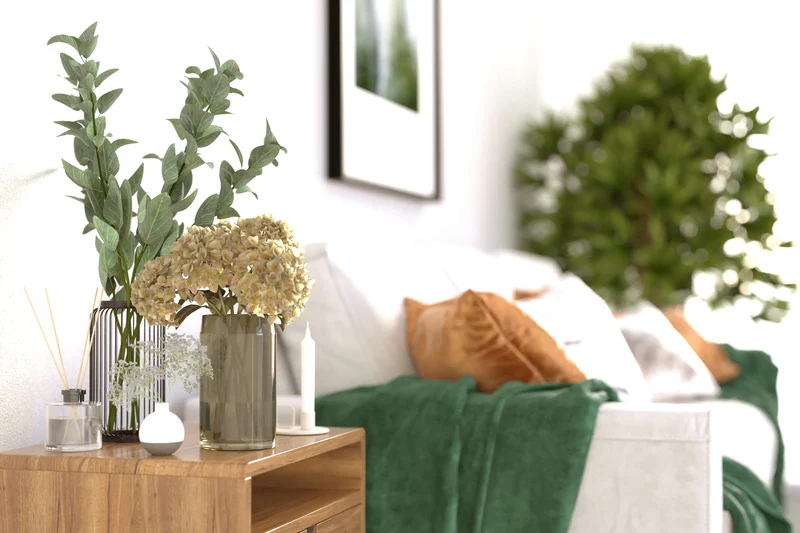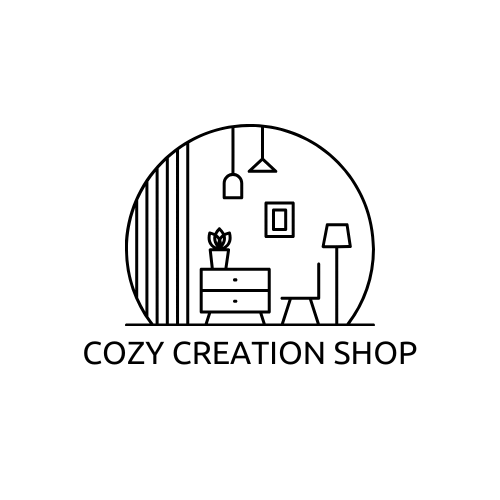
How to Create Pinterest-Worthy Home Decor Pins
Share
Pinterest has emerged as one of the most influential platforms for visual inspiration, particularly in the home décor space. For designers, bloggers, and e-commerce sellers, Pinterest is not just a social media platform; it’s a search engine where users actively seek décor inspiration, DIY ideas, and shopping recommendations. But simply posting photos is not enough. To stand out and drive engagement, it’s essential to understand how to create Pinterest-worthy home decor pins that attract clicks, saves, and conversions.
This comprehensive guide will walk you through practical strategies to design pins that capture attention, communicate value, and inspire action. By following these tips, you can elevate your Pinterest presence and maximize your home décor reach.
Understanding Pinterest as a Visual Search Engine
Pinterest operates differently from other social platforms because users are primarily in discovery mode. They’re not scrolling for memes or updates—they’re searching for ideas and solutions. This means that your pins need to be visually appealing, informative, and optimized for search.
A Pinterest-worthy pin does more than just display a pretty room; it communicates style, function, and personality at a glance. It tells the viewer that they will gain value by clicking through. This is why understanding user intent is crucial when designing pins. People may be searching for seasonal home décor, small apartment styling, DIY projects, or product recommendations. Your pins should address these needs clearly and creatively.
The Importance of High-Quality Visuals
High-quality visuals are the backbone of Pinterest-worthy pins. Users are drawn to clear, vibrant, and well-composed images. For home décor pins, this means showcasing your space or product in a way that highlights textures, colors, and layout.
Natural lighting is critical. Soft, well-distributed light makes rooms look inviting and spacious. Avoid dark, cluttered images; Pinterest users respond best to bright, airy visuals. Additionally, consider multiple angles: a pin that highlights a styled coffee table, a cozy nook, or a striking wall feature can spark interest and encourage engagement.
Choosing the Right Pin Dimensions
Pinterest favors vertical images because they occupy more screen space on both desktop and mobile feeds. The recommended aspect ratio for home décor pins is 2:3 (for example, 1000 x 1500 pixels). Pins that are too short or horizontal may get overlooked as users scroll quickly.
Creating tall pins allows you to include overlays, text, and design elements without compromising the integrity of the image. For multi-image pins, consider using the carousel feature to showcase several perspectives of a room, product, or DIY project. Proper sizing and layout are essential to make your pins visually stand out while remaining easy to read.
Crafting Compelling Pin Titles and Descriptions
Your pin title is often the first thing users read, and a strong title can significantly increase engagement. Use clear, descriptive language that tells users exactly what they will gain. For example, titles like “10 Cozy Living Room Ideas for Small Spaces” or “How to Create Pinterest-Worthy Home Decor Pins That Sell” immediately convey value.
Descriptions are equally important. Use natural, keyword-rich sentences that elaborate on the content of your pin. Include relevant search terms, seasonal cues, or style keywords such as “modern farmhouse,” “boho chic,” or “DIY décor hacks.” Effective descriptions answer the user’s question: what can I learn, buy, or create by clicking this pin? Additionally, including a subtle call-to-action—like “click to see the full tutorial” or “shop these affordable décor items”—encourages users to take the next step.
Incorporating Text Overlays
Text overlays help communicate context quickly. On Pinterest, users often scroll fast, and a pin with no text might not immediately convey its purpose. Strategically placed text overlays clarify the benefit of the pin, whether it’s “Easy DIY Wall Art” or “Budget-Friendly Tabletop Styling Ideas.”
Fonts should be clean, readable, and consistent with your brand. Avoid overcrowding the image with too much text; focus on concise, impactful phrases. Color contrast between the text and background ensures readability, and pairing your text with eye-catching visuals reinforces the message effectively.
Using Color and Branding
Color psychology plays a significant role in Pinterest engagement. Warm, inviting tones attract attention, while bold contrasts help key elements pop. For home décor pins, consider using colors that reflect your brand or seasonal trends. A cohesive color palette across multiple pins builds brand recognition and makes your content instantly recognizable.
Adding subtle branding elements, such as a logo or watermark, also helps establish credibility without distracting from the design. Over time, consistent branding encourages users to trust your pins and follow your account for more ideas.
Highlighting Trends and Seasonal Themes
Pinterest users love trending content. For home décor, this can mean seasonal styling, popular aesthetics, or DIY hacks. Incorporating trends into your pins increases their relevance and shareability. For instance, fall-themed tablescapes, spring florals, or minimalist apartment styling are searches that spike during specific periods.
By aligning your pins with current trends, you tap into real-time user intent. Trend-focused pins not only attract clicks but are more likely to be saved to boards, increasing their long-term visibility. This strategy is essential for those aiming to create Pinterest-worthy home decor pins that resonate with active audiences.
Utilizing Multiple Images and Carousels
Pinterest allows multi-image pins and carousel features, which can be leveraged for home décor inspiration. Instead of a single photo, use multiple images to showcase different angles, styling tips, or step-by-step processes.
Carousels increase user engagement by encouraging swipes, and they offer more opportunities to include keywords in captions. For instance, a carousel pin can guide users through a living room makeover, highlighting furniture placement, décor accessories, and lighting tricks—all while keeping each slide visually appealing and informative.
Optimizing for SEO
Pinterest functions like a visual search engine, so SEO is essential. Include relevant keywords in your pin titles, descriptions, and image file names. For home décor pins, focus on terms that users are actively searching for, such as “budget-friendly room makeover,” “small apartment décor,” or “modern farmhouse accents.”
Using hashtags is also beneficial. While Pinterest does not rely solely on hashtags, they can help categorize your pins and make them easier to discover. Choose specific, relevant hashtags rather than generic ones to increase the likelihood of reaching your target audience.
Writing Engaging Pin Descriptions
Descriptions should balance keyword optimization with storytelling. A strong description highlights what the user will gain, why the content is valuable, and how it applies to their lifestyle. For example: “Learn how to create a cozy living room that looks professional and Pinterest-worthy. These easy styling tips transform your space without breaking the bank.”
A well-written description acts as both an SEO tool and a persuasive pitch, guiding users from the pin to your website, blog, or online store. It’s a crucial element in turning casual browsers into engaged visitors or customers.
Best Practices for Images
Home décor pins should showcase clean, organized, and visually inspiring spaces. Minimal clutter allows viewers to focus on key elements. Incorporate props like plants, candles, or throws to create depth and texture. Including human elements, like hands styling a table or arranging a shelf, can make the image feel relatable and engaging.
Editing is also key. Adjust brightness, contrast, and saturation to ensure your pin pops in the feed. Avoid heavy filters that distort colors, as authentic-looking décor images perform best for Pinterest audiences.
Using Infographics and Step-by-Step Guides
DIY décor projects and styling tips perform exceptionally well on Pinterest. Infographic-style pins that guide users through a process—like “5 Steps to Styling a Coffee Table” or “How to Layer Throw Pillows for Maximum Impact”—add value and are highly shareable.
Step-by-step visuals give your audience actionable content. When users feel they are learning something useful, they are more likely to save the pin, visit your website, and engage with your brand. This approach not only enhances visibility but also positions your content as expert-level inspiration.
Promoting Your Pins
Creating Pinterest-worthy pins is only half the battle; promotion ensures they are seen by the right audience. Use relevant boards, categorize pins properly, and pin consistently to maintain visibility. Tailored pin campaigns for seasonal content, new product launches, or trending décor styles can also drive traffic and conversions.
Consider cross-promoting pins on Instagram, TikTok, and your email newsletters to maximize reach. Encouraging followers to save and share your pins further extends their visibility organically.
Tracking Performance and Iterating
Pinterest analytics provides insights into how your pins perform. Metrics like impressions, clicks, saves, and engagement rates help identify which styles, formats, or content types resonate most with your audience.
Regularly review these insights to refine your strategy. Testing different images, text overlays, and descriptions allows you to continually improve and produce more effective pins. The ability to iterate is key to mastering how to create Pinterest-worthy home decor pins that consistently perform.
Conclusion: Creating Pinterest-Worthy Home Decor Pins
Creating pins that capture attention, inspire engagement, and drive traffic is both an art and a science. By focusing on high-quality visuals, vertical layouts, keyword optimization, text overlays, trend relevance, and strategic promotion, you can produce Pinterest-worthy home decor pins that stand out in a crowded feed.
For designers, bloggers, and retailers alike, Pinterest provides a unique opportunity to connect with an audience actively seeking inspiration. Pins that are visually compelling, informative, and actionable not only attract engagement but also help build credibility, trust, and ultimately sales.
In the fast-paced world of Pinterest, consistency, creativity, and strategic planning are essential. By implementing these techniques, your home décor pins can become a go-to resource for inspiration, driving both traffic and conversions while establishing your brand as a trusted source for beautiful, actionable décor ideas.
